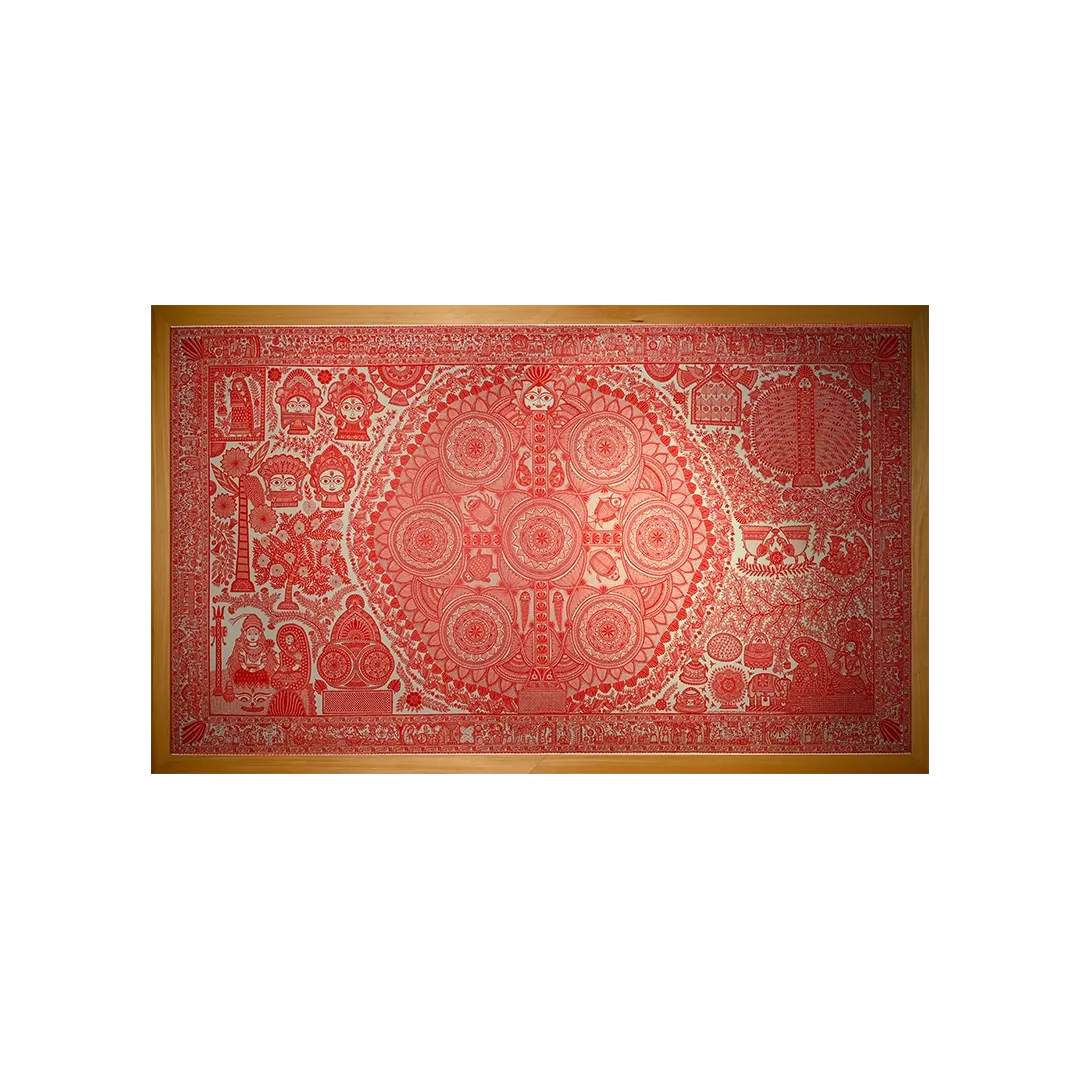

In the Mithila region of Bihar, there is an age-old tradition of creating Kohbar paintings during weddings. The Kohbar Ghar refers to the room where the bride and groom meet for the first time after the wedding ceremony. To bless the couple with a happy and prosperous married life, the walls, paper or fabric in this room are decorated with Kohbar paintings.
The central motif of a Kohbar painting is a large lotus leaf with a female face at its centre, surrounded by six smaller leaves. The central pillar is seen as a symbol of the man, while the leaves represent the woman. Thus, the Kohbar is considered a visual metaphor for the strong bond between man and woman.
Kohbar paintings also include depictions of Shiva-Parvati, Radha-Krishna, the sun, the moon, bamboo, the Navagraha (nine celestial bodies), parrots, bananas, turtles, fish, elephants and horses. Each element has symbolic significance. For example, bamboo represents lineage, bananas symbolise masculinity, parrots are associated with wisdom, the lotus leaf represents femininity, turtles signify longevity and fish are a symbol of fertility.
The Kohbar art form is an inseparable part of Mithila wedding rituals. No wedding is considered complete without it. As a result, Kohbar themes often dominate the works of Mithila artists. Among these, the Kohbar paintings of Godawari Dutta are well-known for their distinctive style.
In her Kohbar, Godawari Dutta masterfully portrays a central pillar surrounded by leaves, along with elephants, Shiva-Parvati, snakes, turtles, fish and the Navagraha. At the centre of the Kohbar, the bride and groom are depicted seated on a cushion, with offerings like a covered betel nut, ceremonial pots, flowers and other puja items arranged before them. The bride is shown praying to goddess Gauri (Parvati) for marital bliss.
Naina-Jogin, a mystical figure wearing a magical skirt (ghaghra) who is believed to protect the newlyweds from evil forces, is depicted on one corner of the Kohbar. This Kohbar is made on a white background using red as the dominant colour. The red colour holds multiple meanings. It is traditionally used for auspicious occasions and symbolises love, affection, passion and excitement. It also evokes sexual energy. When the bride and groom meet, they are strangers to each other. Their union, governed by laws, religion and societal norms, requires the awakening of sexual emotions. With this perspective, red is extensively used in Godawari Dutta’s Kohbar .
This Kohbar is also significant for its structure of lines. The thickness and arrangement of lines are perfectly suited to the composition. No line is repeated. The lines are precise, interconnected and create a unique charm. Around the Kohbar, the border depicts the entire wedding process. Due to these attributes, Padma Shri Godawari Dutta’s Kohbar Painting is renowned worldwide.